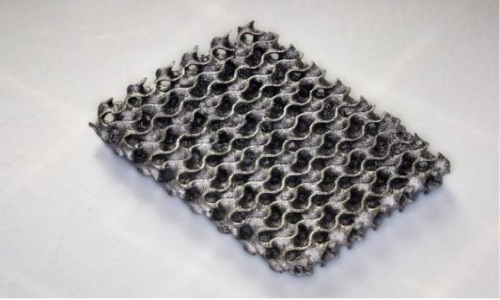


 3:58:14
3:58:14  2023-06-08
2023-06-08  858
858

Many people are not familiar with the subject matter and discipline of materials science because it’s not taught in elementary or high school and only infrequently at the university level. Instead, we are often taught chemistry and physics. Chemistry teaches us how atoms and molecules interact, while physics studies the forces and laws of nature that govern interactions of matter and energy. But there must be something that ties these two together—the interactions of atoms to form molecules, the interactions of molecules to form other molecules, and the interactions of large collections of molecules to determine the properties of a material.
The properties of a material are also the properties of every physical thing we use and interact with daily. Tying together the molecular-level structure to the macroscopic properties of objects is where materials science comes in. Understanding this discipline can be the key to unlocking a new perspective for engineers who are developing new products.
The field of materials science is the study of materials with a focus on their composition, structure, and properties. The interdisciplinary field combines physics, chemistry and engineering and encompasses all-natural and artificial materials. This includes metals, ceramics, glasses, polymers, semiconductors, and composites.
A "material" is a collection of many atoms or molecules, where the collection typically behaves differently than the individual parts. For example, when one or a few water molecules behave chemically similar to the molecules in a glass of water, but the few molecules are not a liquid, they don’t flow, and they don’t exhibit viscosity or surface tension. These are properties of large collections of molecules and are examples of properties of a material: properties that depend on the collective interaction of many molecules or atoms. Understanding and predicting material properties requires understanding the behavior of individual atoms and molecules and the behavior of large collections of these components. Materials scientists can use this understanding to develop new materials that follow a set list of desired properties.
A great example is gold. As an element, it has distinct chemical properties; however, when a few thousand gold atoms are combined to form a thin gold foil, it exhibits collective behavior that a single gold atom cannot. The collection of gold atoms can be bent, stretched, or hammered to form objects that retain their shape and show new properties that make gold a useful substance, like heat and electrical conduction. Properties like electrical conductivity and malleability are material properties, i.e., properties of large collections of atoms. Single atoms and molecules cannot exhibit these properties.
Reality Of Islam |
|

Water may s

"It is

The process

Astronomers
 9:3:43
9:3:43
 2018-11-05
2018-11-05
10 benefits of Marriage in Islam
 7:5:22
7:5:22
 2019-04-08
2019-04-08
benefits of reciting surat yunus, hud &
 9:45:7
9:45:7
 2018-12-24
2018-12-24
advantages & disadvantages of divorce
 11:35:12
11:35:12
 2018-06-10
2018-06-10
 6:0:51
6:0:51
 2018-10-16
2018-10-16
 12:10:56
12:10:56
 2022-11-17
2022-11-17
 8:3:0
8:3:0
 2018-06-21
2018-06-21
 2:42:26
2:42:26
 2023-02-02
2023-02-02
 9:39:36
9:39:36
 2022-12-28
2022-12-28
 4:26:43
4:26:43
 2022-02-21
2022-02-21
the happy life of mankind requirement
 6:36:36
6:36:36
 2022-01-25
2022-01-25
 4:2:19
4:2:19
 2022-10-10
2022-10-10
 5:41:46
5:41:46
 2023-03-18
2023-03-18
| LATEST |